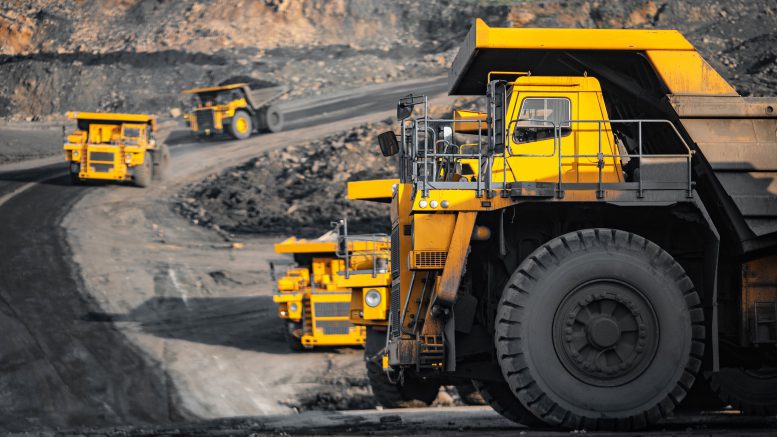As industries and nations fret about getting the raw materials needed to power the energy transition, coal is also seeing a stunning rise. In September 2021, the price of ICE Newcastle coal was around US$120 per tonne. In March, after Russia’s invasion of Ukraine it spiked to nearly US$380 per tonne. At press time at the end of August — shortly after a European Union embargo against Russian coal came into force on Aug. 11 — it rose higher still, to US$410 per tonne.
At the same time, coal use has been growing. In fact, according to the International Energy Agency (IEA), 2022 could be on par with the 2013 all-time peak in demand for the fossil fuel of 8 billion tonnes (the majority being thermal coal). The IEA notes that the market for high-quality thermal coal was so tight in June that it traded at a higher rate than metallurgical coal. “This unprecedented phenomenon is a clear indication of the extraordinary situation in coal markets,” it said in its Coal Market Update released in late July.
Europe’s efforts to break its dependence on Russian energy have helped juice demand, with many EU nations turning toward coal as a substitute for natural gas, the price of which has risen even more steeply and supplies of which are running short. In late August, the price of natural gas hit a record high of €343 ($448) per megawatt hour in Europe – up from about €27 a year ago, and more than 10 times the price in the U.S., according to the Financial Times. Electricity prices have correspondingly risen into the stratosphere.
This summer has also seen China dealing with a record-breaking, and in some areas, crippling heat waves. Affecting much of the northwest, central and southeast of the country, for more than two months, the extreme heat has dried up reservoirs, shrinking its supply of water supplies for hydroelectricity. In response, the Asian giant, which already accounts for about half of global coal demand, has doubled down on coal to meet the needs of industry and residential air conditioners.
Germany, which previously planned to phase out coal by 2038, and has an ambitious net zero target of 2045 but has also shunned climate-friendly nuclear power — now finds itself turning to coal as well. The country, which has the EU’s largest economy, has been heavily reliant on Russia for energy. It began to restart coal-fired power plants in August. Other EU countries, including France, the Netherlands, Spain, Italy, Greece, Czech Republic, Hungary and Austria, are also extending the lifetimes of coal plants scheduled for closure, reopening closed plants or raising caps on working hours of coal plants to reduce gas consumption, the IEA has noted. This despite coal’s role in climate change: coal-fired power plants are responsible for about 20% of global greenhouse gas emissions.
The energy crisis will not have a short-term fix. “The next five to ten winters will be difficult,” Belgian Prime Minister Alexander De Croo warned in August, as natural gas and electricity prices across Europe surged.
Of note, while Germany is desperate to diversify its energy sources, longer-term, it is still reluctant to reconsider nuclear power, which it backed away from in the wake of the Fukushima nuclear disaster in 2011.
Instead, during a visit to Canada in August, German Chancellor Olaf Schloz signed a “joint declaration of intent” with Prime Minister Justin Trudeau to work towards exporting green, wind-generated hydrogen from Newfoundland and Labrador by 2025. (The project – which as currently envisioned, would see some 164 wind turbines installed along the Port au Port Peninsula — has already generated concerns.) Trudeau also signed agreements on the supply of battery minerals and co-operation on battery manufacturing with leading German automakers who were part of the European delegation.
Neither announcement will help Germany get through the upcoming winter, however — unlike reliable, convenient, dirty, hard-to-quit coal.


Be the first to comment on "Europe’s coal conundrum"